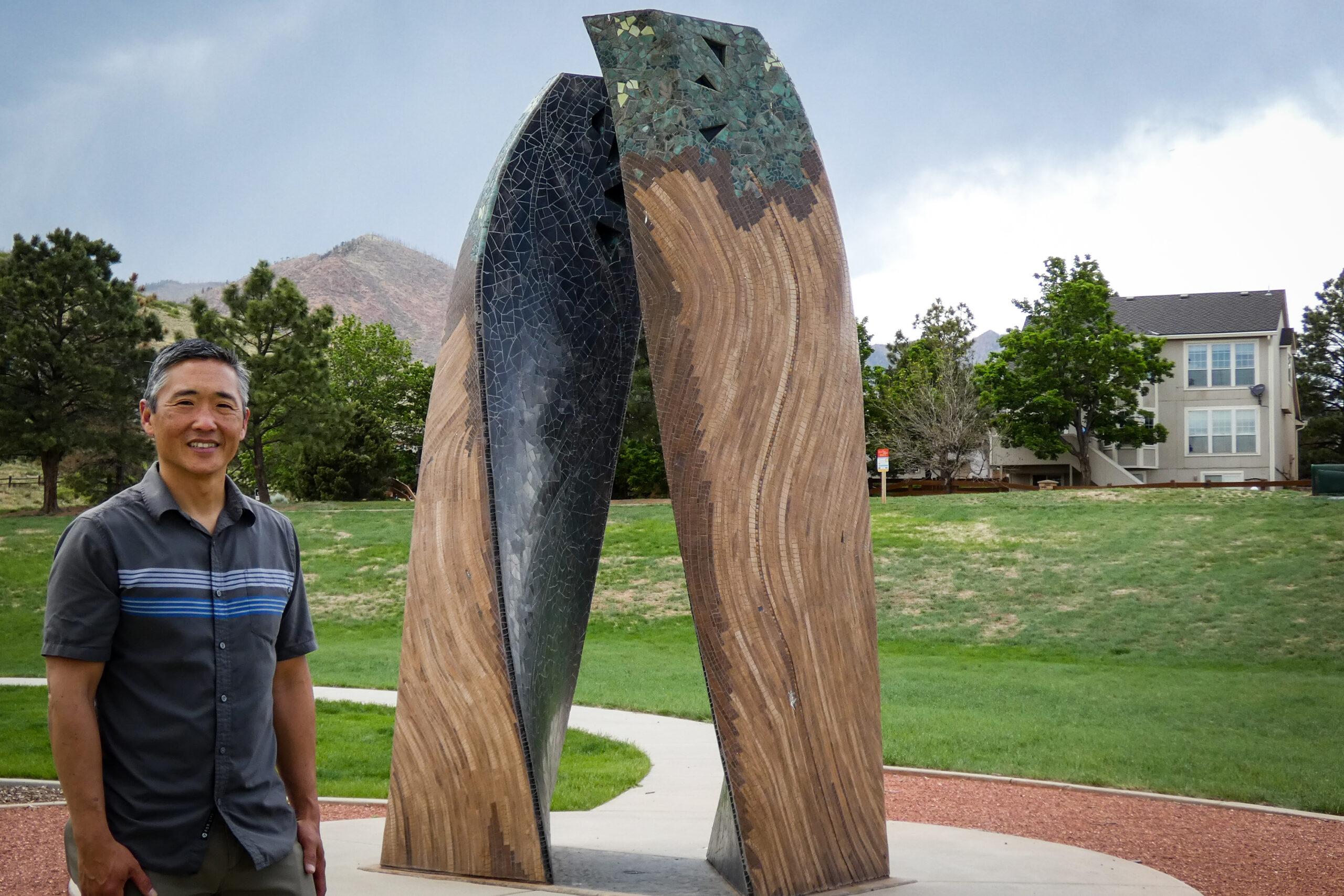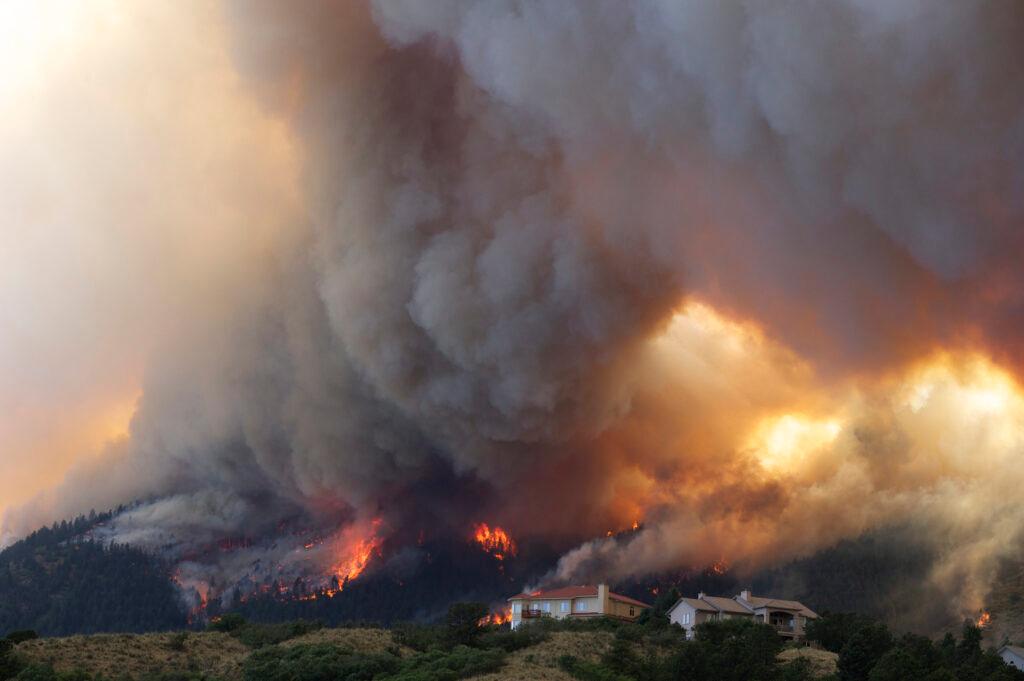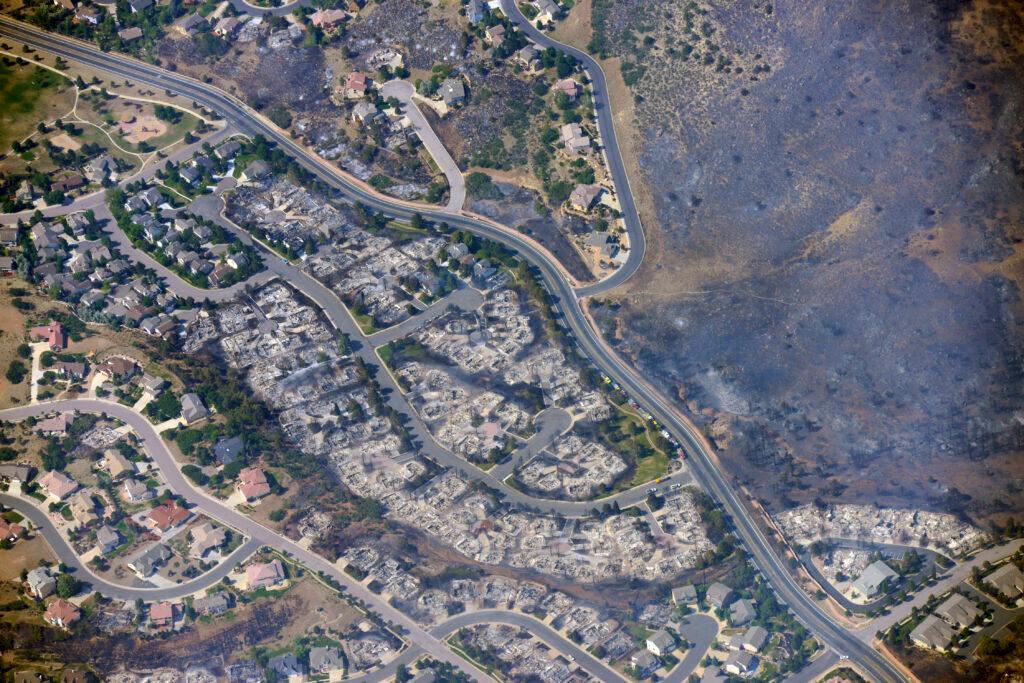
Remembering Waldo Canyon fire | A fire expert reflects on wildfire history | Waldo was a catalyst for mitigation | Lessons learned by Colorado Springs
The Waldo Canyon fire started in the mountains west of Colorado Springs ten years ago on June 23. Smoke was actually first reported on June 22, 2012 but it wasn't located until the next day. Just days later it roared into the city, killing two people and destroying hundreds of homes in the Mountain Shadows neighborhood. It also burned the Flying W Ranch.
Tony Cheng leads the Colorado Forest Restoration Institute and the Southern Rockies Fire Science Exchange Network at Colorado State University-Fort Collins. He visited the area with KRCC’s Shanna Lewis and reflected on the significance of the Waldo Canyon fire for Colorado.
Here’s an excerpt from their conversation, which has been edited for clarity.
Shanna Lewis: How does the Waldo Canyon fire fit into the historical context of wildfires in Colorado?
Tony Cheng: Wildfires in Colorado have always been around. So it shouldn't be surprising that we had an event like Waldo. What was unique about Waldo was how it got into the suburban communities of Colorado Springs and transformed from a wildland fire into an urban conflagration. We really had never seen that in Colorado, nothing that really was of the magnitude of destruction.
Now, we've seen similar kinds of transitions from wildland fire into urban fire in places like California, but when it happened here, I think it was a real wake up call, especially at that time.
The other thing (is) that Waldo Canyon came on the heels of other fires, such as the Hayman fire in 2002, that burned almost 138,000 acres. There was definitely some loss of homes and structures, but not of the magnitude of Waldo. Subsequent to that, we've seen more and more of these fires that transitioned from a wildland fire into an urban conflagration.
SL: What does that mean for communities and for local people who have to deal with fires?
TC: I think it really has expanded the mental model of what is at risk in this area to wildfire. The original mental model is a bunch of homes tucked within very dense forest stands. When a fire comes and those burn down, those are tragic events, but they might not be unexpected. It's like we take this risk of living out in the boonies, in the woods.
When you stand here in the Mountain Shadows subdivision and you're looking around at a park, people's yards, flower gardens and we don't think of that as being at high fire risk danger.
So I think something that Waldo has really opened all of our eyes to, especially in urbanized areas that are really bumping up against those wildlands, is how any fire start that occurs, even five miles away, could transition into an urban fire. That awareness raising, I think, has been a really powerful message that Waldo taught us.

SL: If we look at the history, starting with Hayman and moving through Waldo Canyon ten years later, what do you see in this thread?
TC: Looking back, the Hayman fire, and even to a certain extent the Waldo Canyon, were surprising events that really rocked our world and really created a kind of cognitive dissonance. In the 10 years since Waldo, I think we are now coming to grips with more fire. We're also coming to the grips with the fact that it's not just a federal land agency problem. It's not just the Forest Service that has to deal with this. It's all of us. It's all of us who live, work and play in these wildlands.
We have a role in terms of not being an ignition source, taking care of our own properties so that we aren't that one home that creates a cascading domino effect, working to support our local fire agencies so they have the resources they need all and thinking about where and how we build.
SL: What do you see in the future?
The future is more fire. We have more ignition sources on the landscape. We are having more days over the course of the year that are conducive to fire ignition and spread. And we have more fuel on the landscape as a result of past land management and land use. The math is fairly simple that all those things are converging to have more fire.
For example, in March, April and into May, we were seeing fires up in Cripple Creek at 8-9-10,000 feet. There should be snow up there and now there's fire. All of those conditions are changing and (we) have to accept that. We have to come to an understanding that we are now, we are living in a manmade age of fire.
Ember assaults, population pressures and the costs of forest loss
SL: Were there lessons that were learned from Waldo about fire mitigation for homeowners?
TC: The lessons that were drawn from Waldo in many ways mirror lessons from other fires that led to guidance like Firewise USA. That was based on an accumulation of research that looked at wildland urban interface fires in places like California regarding the causes of home ignition. Ember showers and the ember assaults that come from some of these larger fires are causing the ignition of structures well in advance of the flaming front.
When we originally thought about fire mitigation, we were mitigating against the idea that there's this flaming front moving across the landscape. Now, what we understand is embers are being propelled far in advance of a fire front. That's what it's actually igniting structures.
Imagine an outside house wall. It's basically a catcher's mitt for all these embers coming in from a fire. So if you had a west facing home here in Mountain Shadows, you had a beautiful view of the mountains, but that's also where the winds were coming in carrying embers.
So being “ember aware,” is now part of home builder and homeowner education. There are ways that we can build and maintain homes that make them less vulnerable to ember ignition. That's just one small example, but all it took were just a couple of homes that were ignited from embers and then those homes then became the source of ignition for other homes.
If you can stop that one home from catching embers, or at least if embers do hit the home, they're not going to engulf the house in flames. So for example, having things like gravel all the way up to the side of the home and then concrete up the wall a couple of feet. Now, we're thinking about constructing homes in ways embers can pile up but not cause that one home to ignite and cause that cascade domino effect.

SL: Colorado Springs’ population, just like much of the rest of Colorado, has been growing quite a bit. What does that mean for wildland urban interface fires?
TC: Certainly we now know the vast majority of fire starts in the wildland and wildland urban interface are human caused. So with more people interacting with the wildlands, we're going to have more fire ignitions. We're also seeing more of these kinds of developments that are susceptible to those risks. That does a couple of things.
One is that it compels fire responders to put out every single fire that starts. Nobody wants to risk a fire start, even if (the conditions are) kind of cool and wet, they're going to put it out because they don't know when that wind is going to change. That makes a lot of sense, but we also know that every fire that we put out today leads to a buildup of fuels for a larger fire tomorrow.
So we're kind of discounting the future in favor of present risk.That's because we have more people and more homes. We're perpetuating the cycle and kicking that can down the road and there are no easy answers. There's a lot of people who need to understand what's happening and do their part in mitigating the risk for when that fire does actually start.
The second thing that we are now seeing, unfortunately, is that when fires do move, they can more quickly move into these wildland urban interface developments. When they do, you're seeing more home-to-home ignition types of fires, Waldo Canyon was certainly a local example. We’ve seen it in California (and elsewhere too).
Those kinds of events are really causing us to think about how and where we build. We're not going to stop building, because people need places to live. We're gaining a greater understanding of building in smarter ways. We now have a lot of tools at our disposal and a lot of knowledge, it's just a matter of enacting those tools.
SL: What does it mean for the ecology of the area, after a fire like Waldo?
TC: Looking up at the hillside here, we still see a lot of standing dead trees. That's not surprising, but one of the things that we are not seeing in a lot of places, Waldo included, but certainly even going back as far as the Hayman fire, is we're not seeing the forest come back. We call this fire-adapted ecosystems.
All of our forest ecosystems here have had fire as part of their natural life cycle. So fire comes through and kills trees, (normally) it creates space for baby trees to grow. But now in a lot of these areas we're not seeing baby trees come back. We're losing fairly large, extensive forests. They're basically going to be in a shrub-grassland state for a number of years, decades, if not centuries, unless we as society say we want to pay to replant trees.
We are only really coming to grips with that lack of reforestation and tree regeneration and what that means in terms of water, recreation, carbon sequestration. When we start putting dollar figures to, “what it is going to take to actually replant?” We need a whole supply chain including collecting seed, planting trees in nurseries, growing them, transporting them back to the forest, and having skilled people to replant them. That's a whole economy that we don't really have right now.
We're still catching up our systems to recover and restore from some of these fires. It may be that even with a pretty heroic lift, we're not going to be able to replant all 15,000 acres. We can only plant maybe 10% of that. We have to readjust our expectations of what our landscape looks like. With enough time Mother Nature will recover and repair, and in another 500 or 1,000 years, we may have another forest. But I think those are things that we have to come to grips with as a society. Those are values that we have to have to think about.









